https://blogs.sap.com/2018/03/19/s4-embedded-analytics-the-virtual-data-model/
VDM
The Virtual Data Model (VDM) represents the simplified and harmonized business oriented semantically enriched data model of the suite. “Virtual” refers to the fact that the VDM semantical model may deviate from the historically grown persistent model of database tables to make it simpler and easier to understand.
The VDM exposes the Business Data of an SAP system as an Understandable, Comprehensive and Executable model for consumers in Transactional Applications, Analytics, External Interfaces fulfilling important product qualities, e.g. Performance, Extensibility, Security and Privacy, Consistency as a reusable, stable and compatible platform for SAP internal Development, Partners, Customers
thus increasing development efficiency and fostering ease of consumption.
Implementation
There are currently two different implementation approaches:
- In S/4HANA the VDM is established by specifically classified/annotated ABAP CDS Views.
- in HanaLive the VDM is implemented by calculation views.
View Layering of the CDS based VDM
- View Layering 1
- View Layering 2
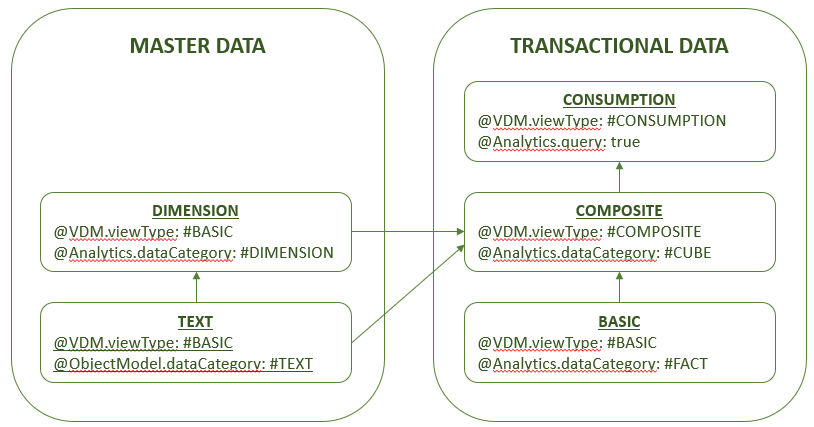
VDM CDS Meta Model Overview
The following diagram is a reference of the VDM Meta Model showing the most important specializations of views, fields, associations and parameters, which form the VDM meta model, in effect. It also shows the annotations that are used to define these specializations.
Metadata Consumption by Frameworks
In the context of the consumption frameworks the main goals of the CDS based meta models are
- Enabling the reuse of metadata definitions across various realizations of a given domain like Fioiri UI and analytics,
- Provisioning of a common unified and harmonized meta model for all frameworks
Analytical Engine
Implicit Analytical Engine Logic (< NW7.50/7.62):
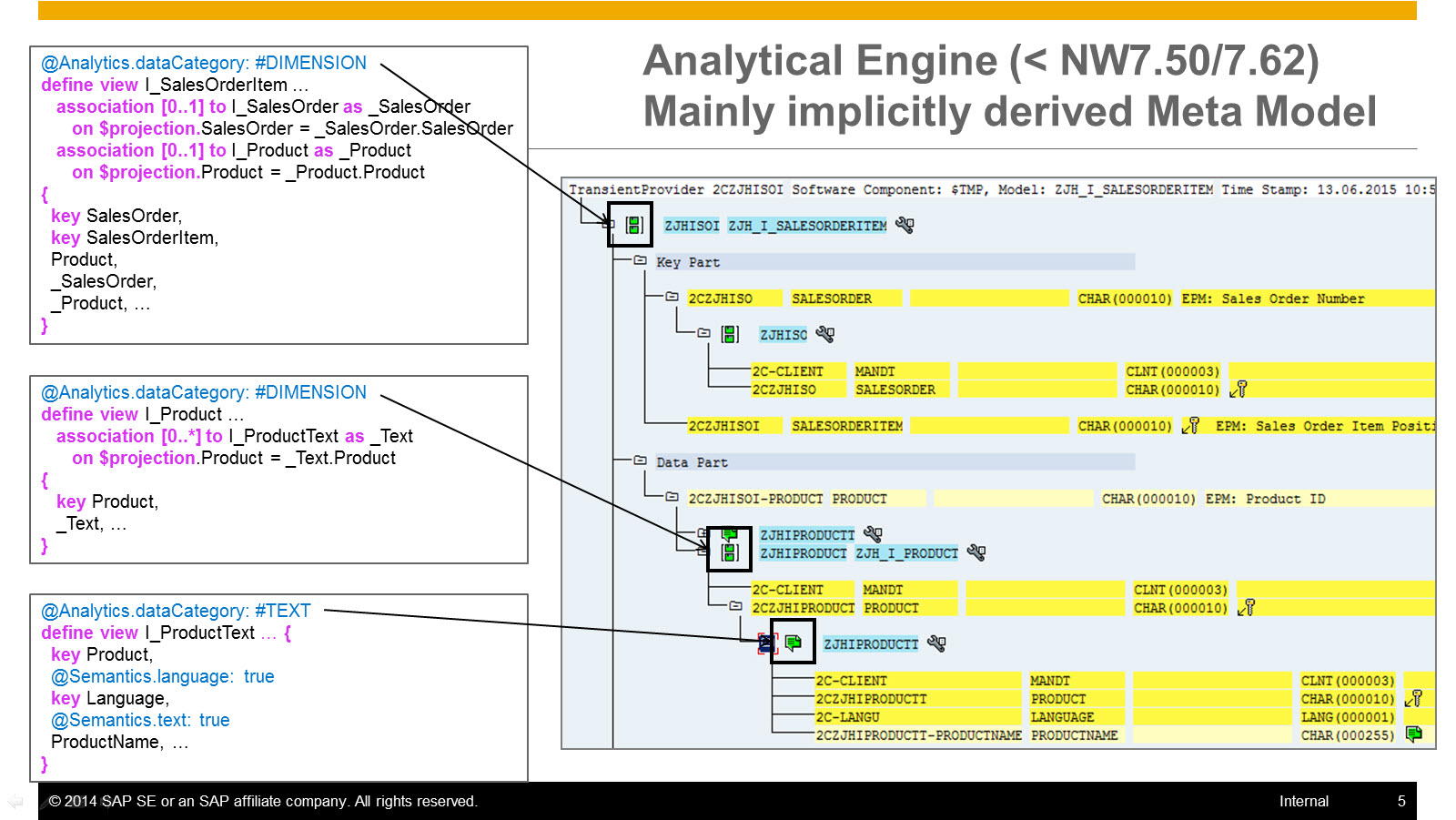
Explicit Model in Analytical Engine:
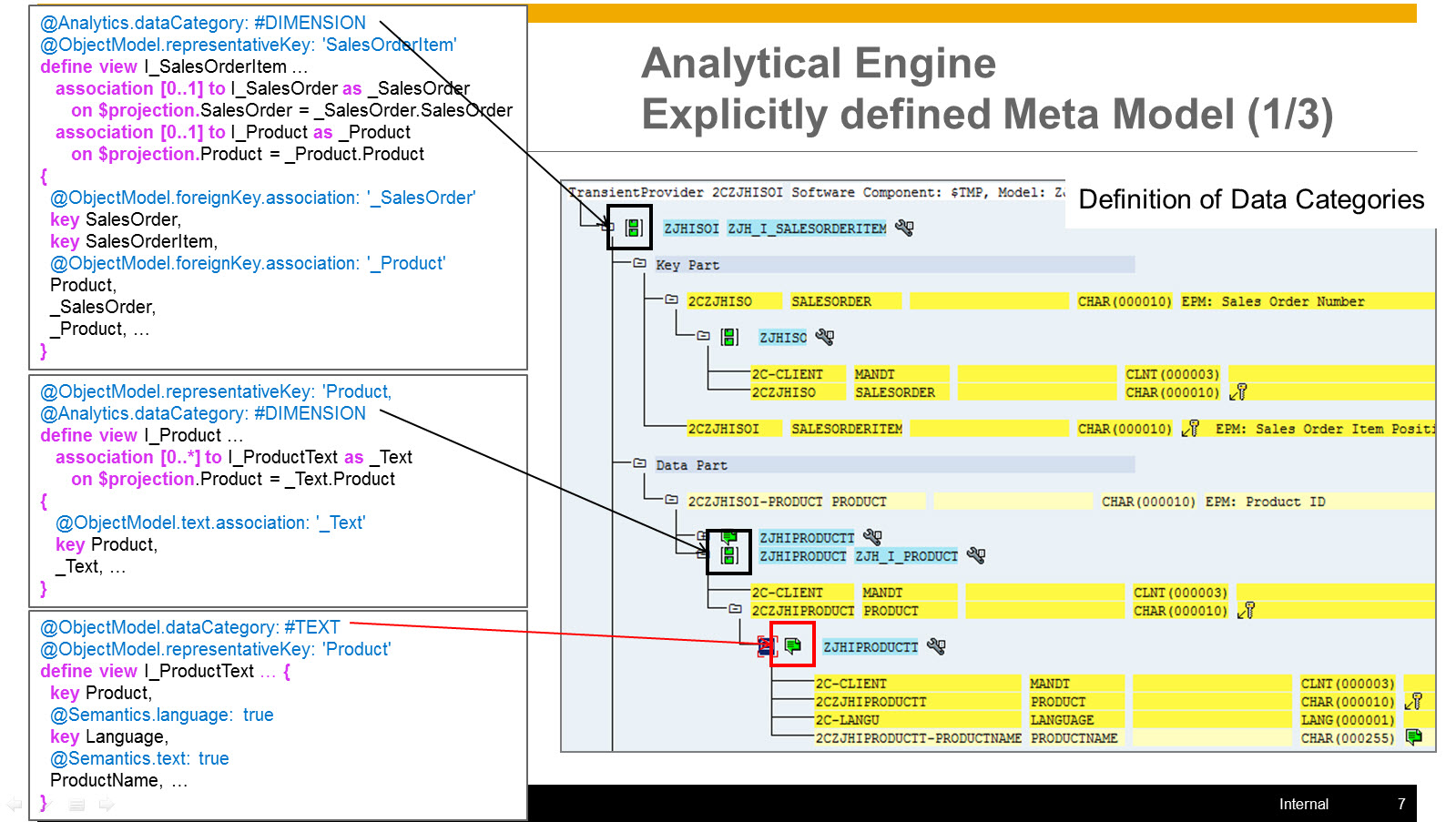
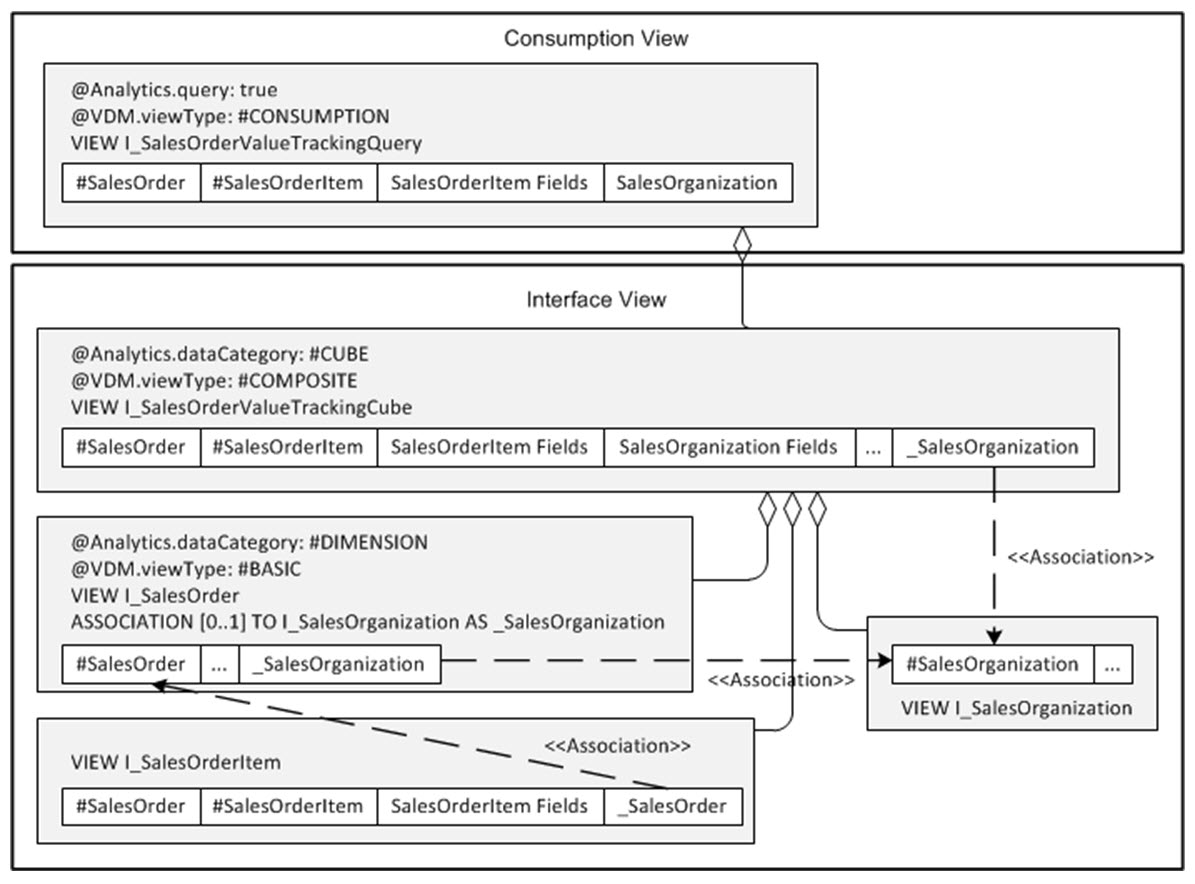
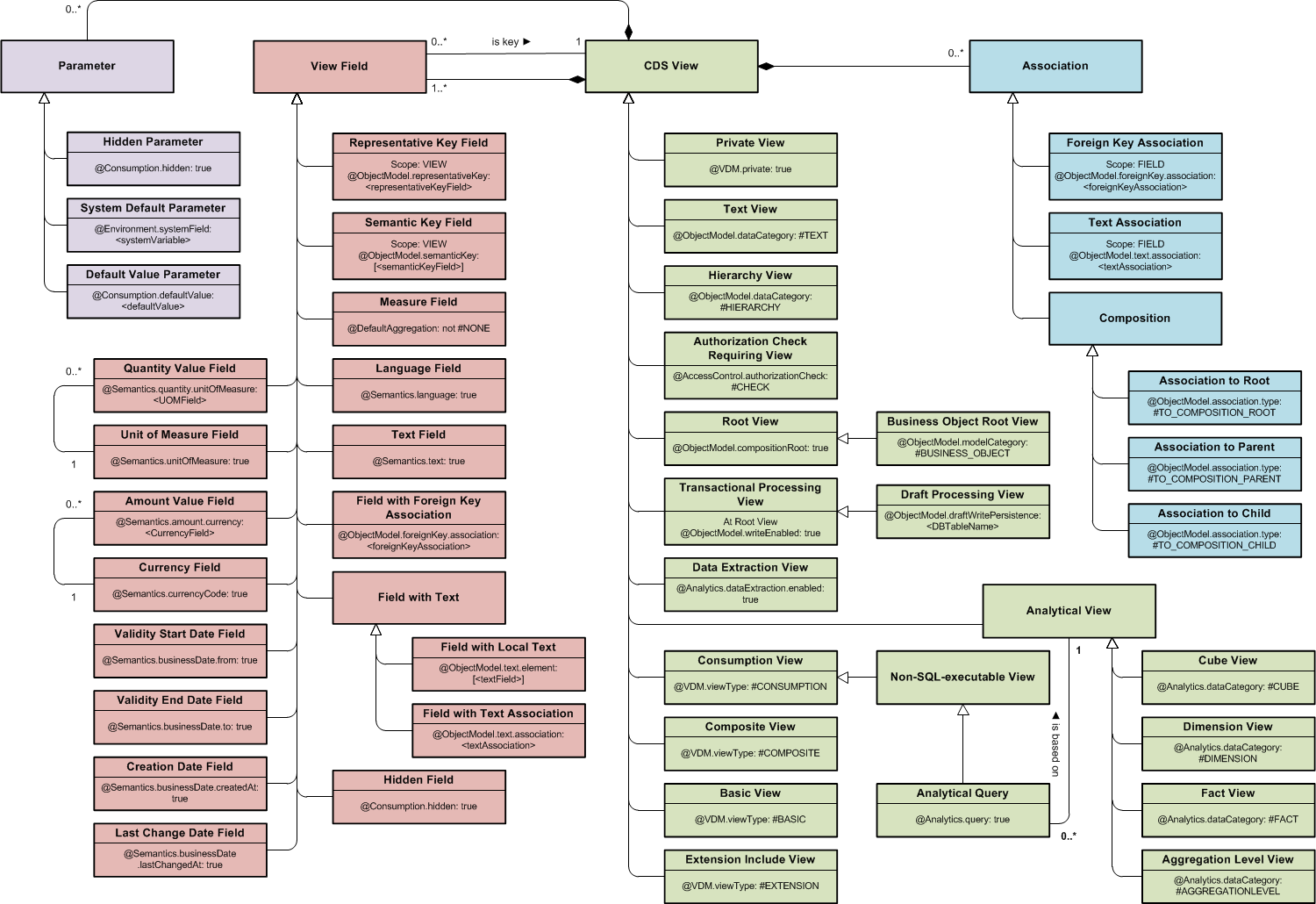
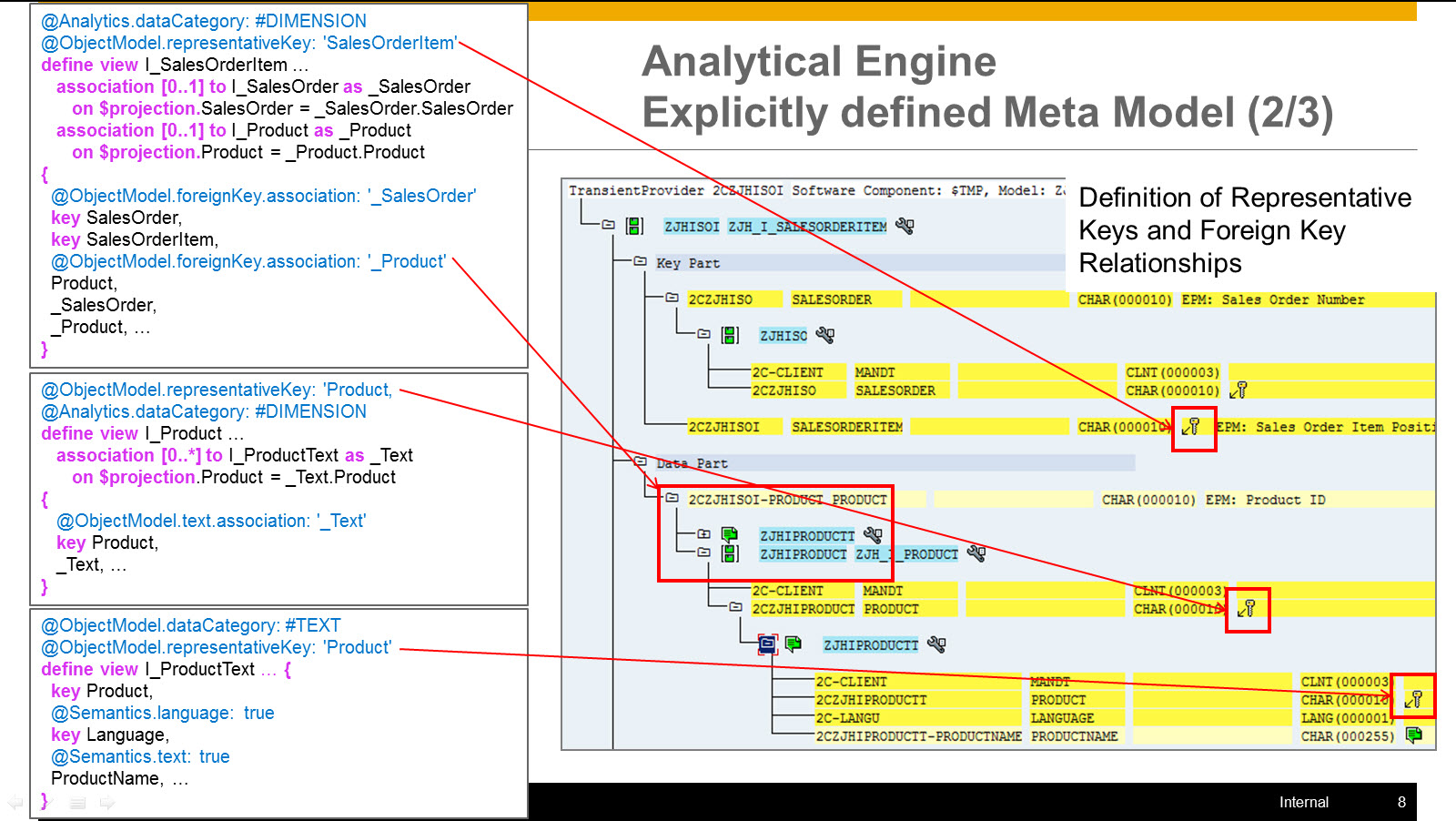
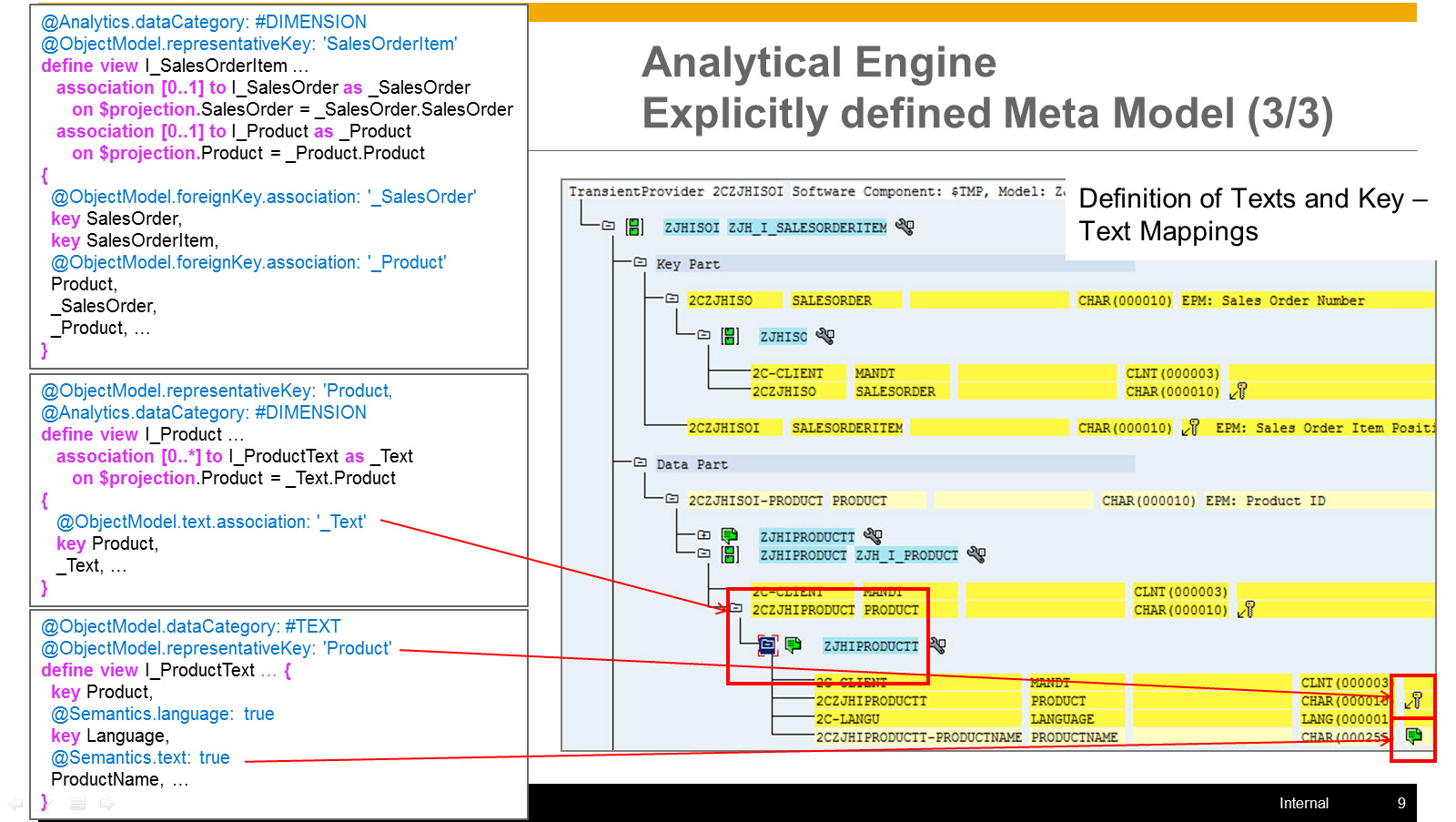
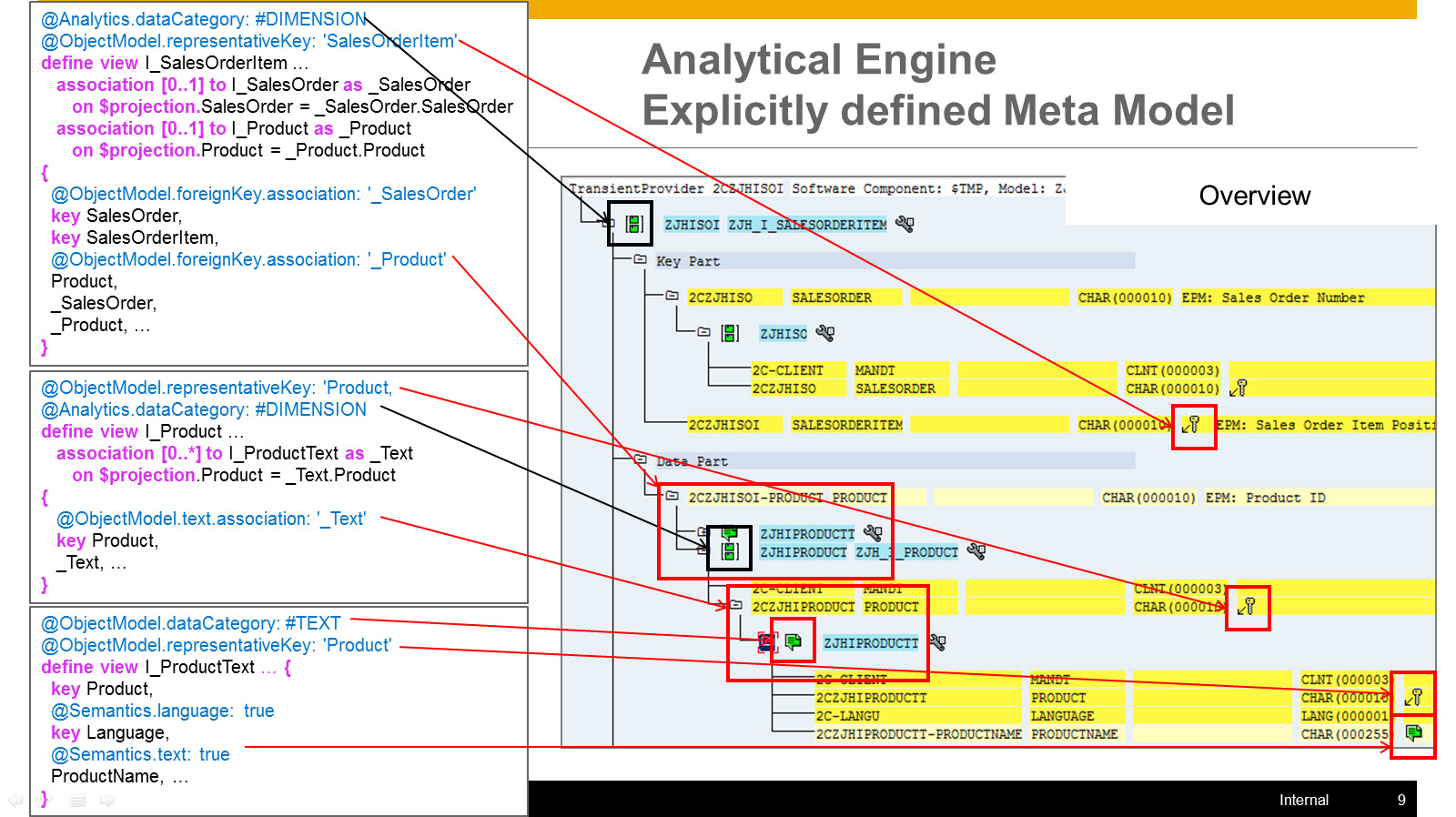
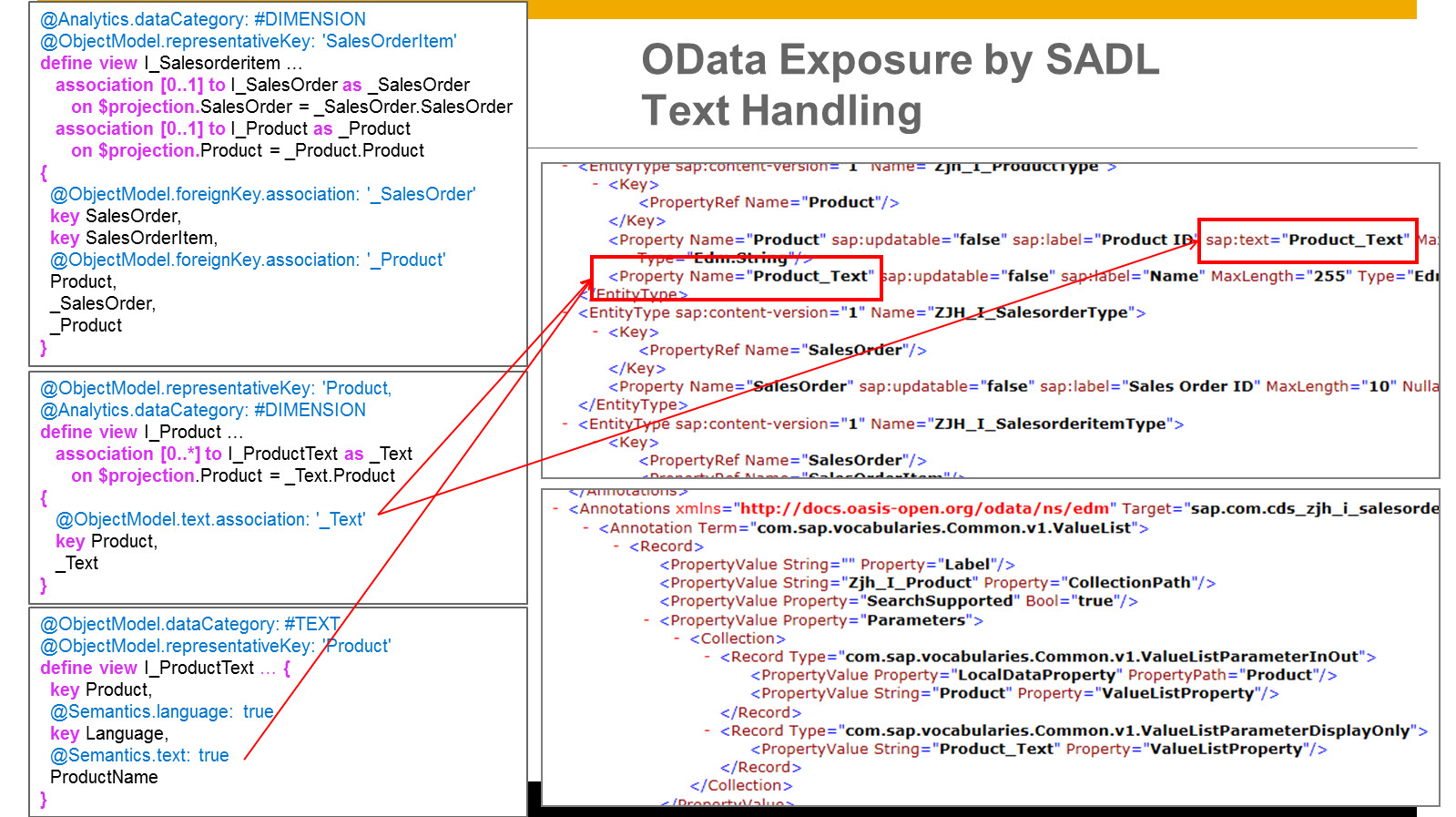

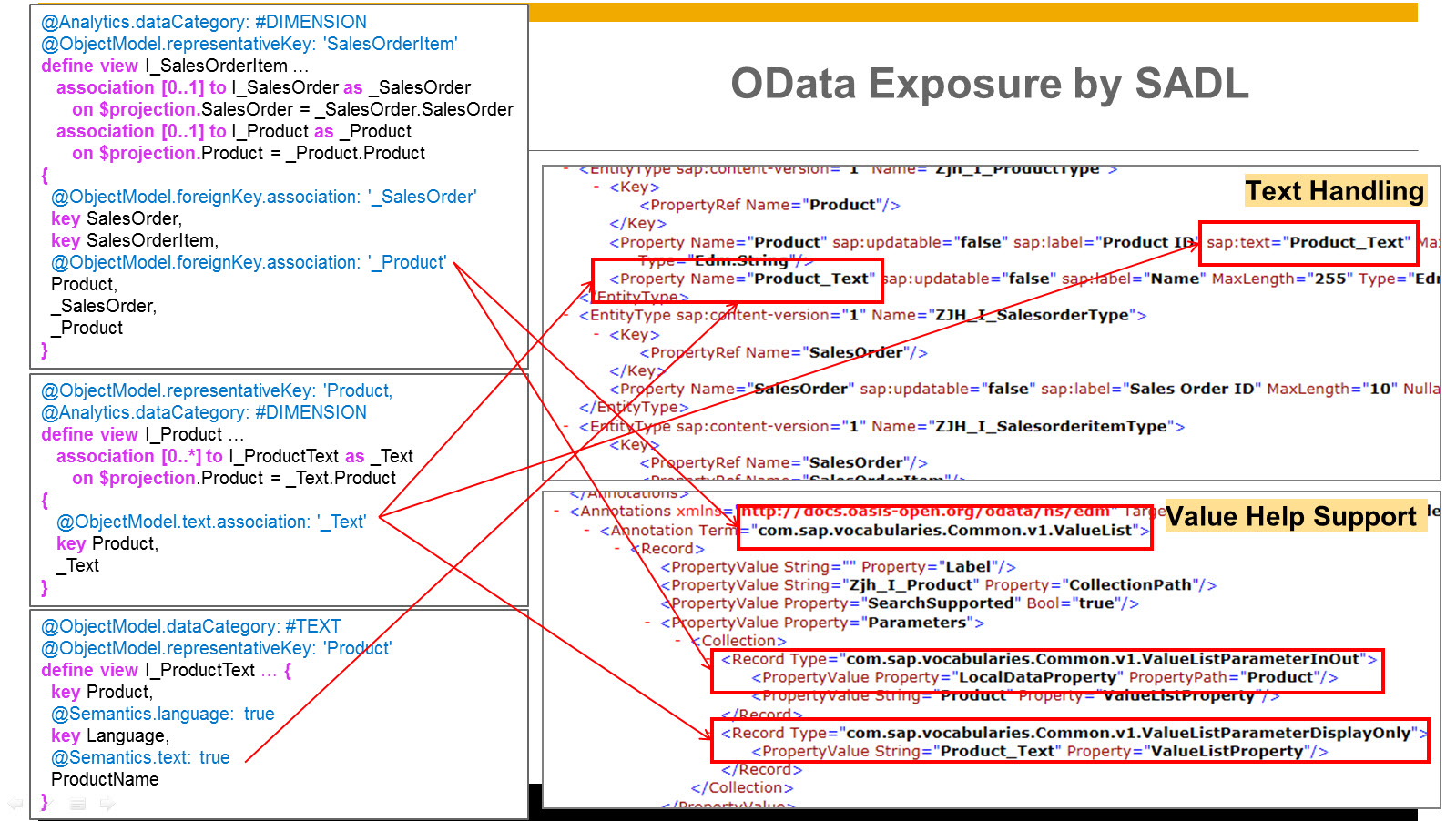
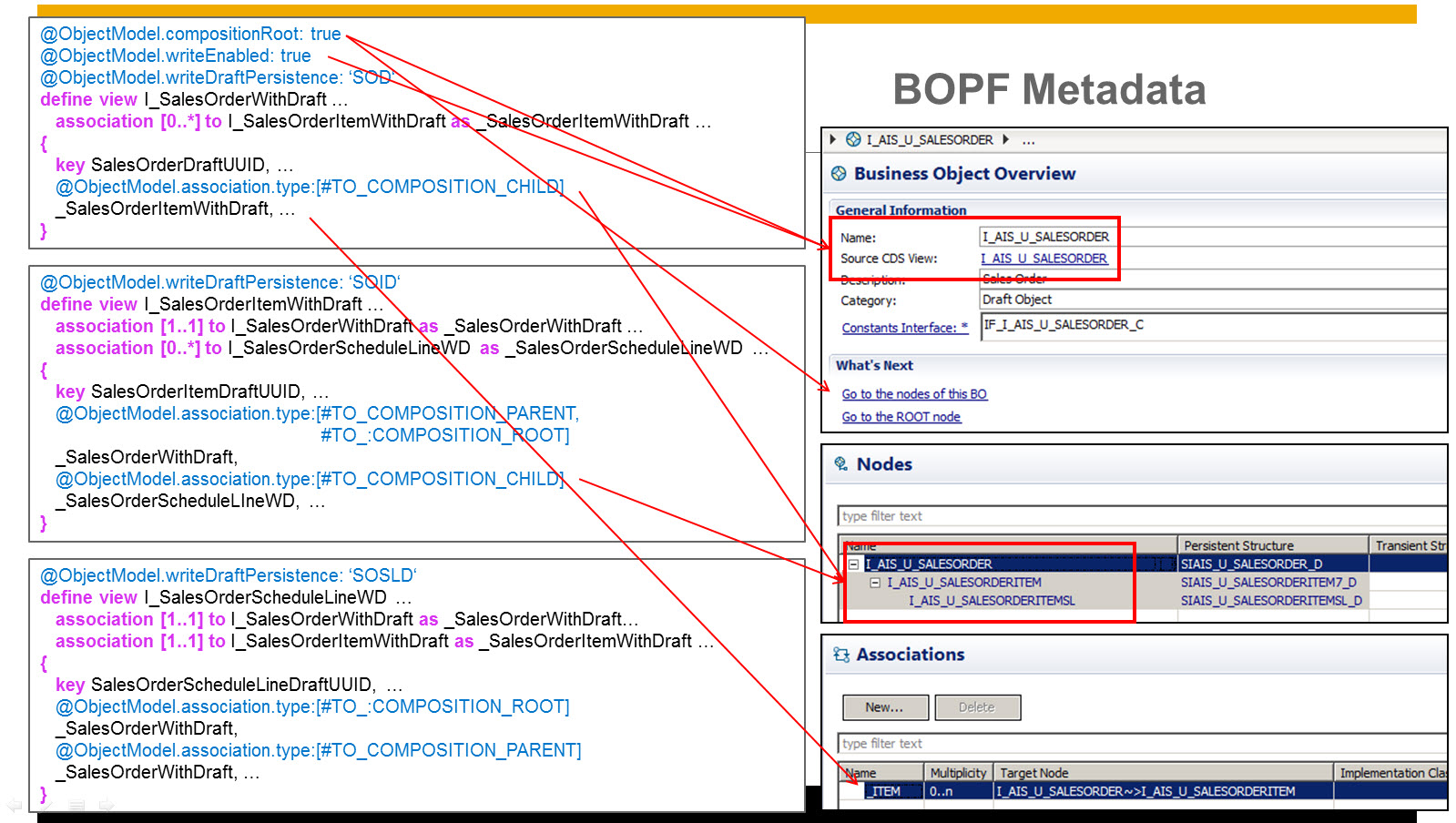
Comments